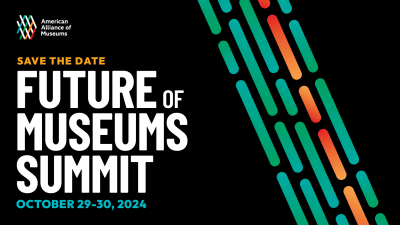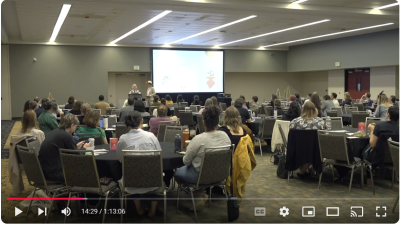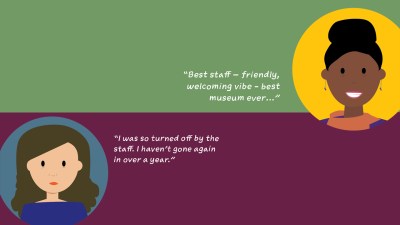
It’s always risky to bundle a demographic into one description, but very credible research has revealed a great deal about the over-fifty demographic in the United States: who they are, in general, and what they seek in their lives. As museum professionals, these statistics provide us with helpful clues about how to develop programs that serve their needs, and ultimately (through their generosity) our institutional needs as well.
Who are the “over-fifties”?
They represent “32 percent of the total U.S. population…and possess an annual personal income of over $3.9 trillion of wealth.” In addition, they “spend more money on travel and recreation than any other age group and purchase 60% of all luxury travel…they account for 48% of total customer demand…and spend more on quality clothing for their grandchildren than the children’s parents do.” (Ken Dychtwald, “A Longevity Market Emerges,” The Upside of Aging, Paul Irving, Wiley Publications, 2014.)
Older people are more interested in experiences than things, however, and these have to pass muster with the sum of their extensive previous experiences. They are savvy shoppers and have more resources to spend than any other segment of society. This fact leads Ken Dychtwald, President and CEO of Age Wave, to exclaim:
“Historians will no doubt wonder why American industry worked for so long to sell to the youth market when it was their parents and grandparents who had both the money and the clout. Boomers create huge opportunities for companies—whether financial, interpersonal, or recreational.”
To Mr. Dychtwald’s list I would add “cultural,” because it follows that museums can learn a great deal from a study of these statistics. They have already started moving in this direction, increasing their focus on more in-depth and experiential learning, with anything from multi-week workshops to travel options that extend understanding of their educational mission. Such initiatives not only increase the value of the museum’s offerings to an important, and huge, segment of society, but they also nourish loyalty that often leads to legacy gifts in much the same way that alumni might give to their alma mater.
What does this demographic seek?
If we ask Mr. Dychtwald more about the needs and interests of this over-fifty demographic, he offers the following advice:
- For those between the ages of fifty and sixty-four, there is a great interest “in health, of course; self-fulfillment; social activities…and how to spend their increasing free time.” For us in museums this is a real opportunity to offer anything from travel experiences to in-depth adult education programs that not only edify, engage, and entertain but also underscore a sense of community. With grandchildren increasingly in their lives, there is also opportunity to offer intergenerational programs, especially if they unite the generations through stories.
- For those between sixty-five and seventy-nine, the interest in health understandably increases, and hand-in-hand with this comes a desire to engage in experiences that enhance their quality of life. Again, consequently, there is an interest in travel and education that provides memorable experiences. As age increases, so too does a sensitivity about “being excluded from society.” This group “most definitely does not want to be put out to pasture,” so developing and maintaining social connection is a key interest. Here again there is real opportunity for museums, because they sit at the heart of community and, at their best, offer the kinds of in-depth and meaningful programs that older active adults crave.
- The eighty-and-older demographic, Dychtwald tells us, sadly has “the highest poverty levels of any age group in America,” a fact we must consider with as much humanity as possible. Mobility is a major issue for this group, so it behooves us to identify ways to bring the museum to them, whether that means collaborations with convalescent homes and hospitals, mobile vans, or virtual means. As we speak, the internet reaches more and more pervasively into the lives of people of all ages, and in the decades to come computer literacy will be universal. Consider the options here, as we think of those who are unable to leave their homes, and consider the antidotal power of reaching out to this demographic in ways that enhance self-worth and community. For people of this age, loneliness and a sense of disconnection are toxic companions to disease.
In light of these facts, consider the power of lifelong, tailor-made learning for those over fifty, a full 32 percent of our population. Work with community centers, churches, and educational institutions to develop “age-friendly” communities, taking lessons from the World Health Organization’s program. Also consider providing transportation services in partnership with care facilities; these provide opportunities for residents to get out periodically and breathe the air of something new, engaging, and community-strengthening.
Most of all, we should pay attention to the striking fact that, with each passing day, more than ten thousand Americans become sixty years old! We are in the midst of what AARP CEO Barry Rand calls an “age revolution,” and this seismic demographic shift offers us the opportunity to transform the museum experience in the years ahead.
Skip over related stories to continue reading article








Comments